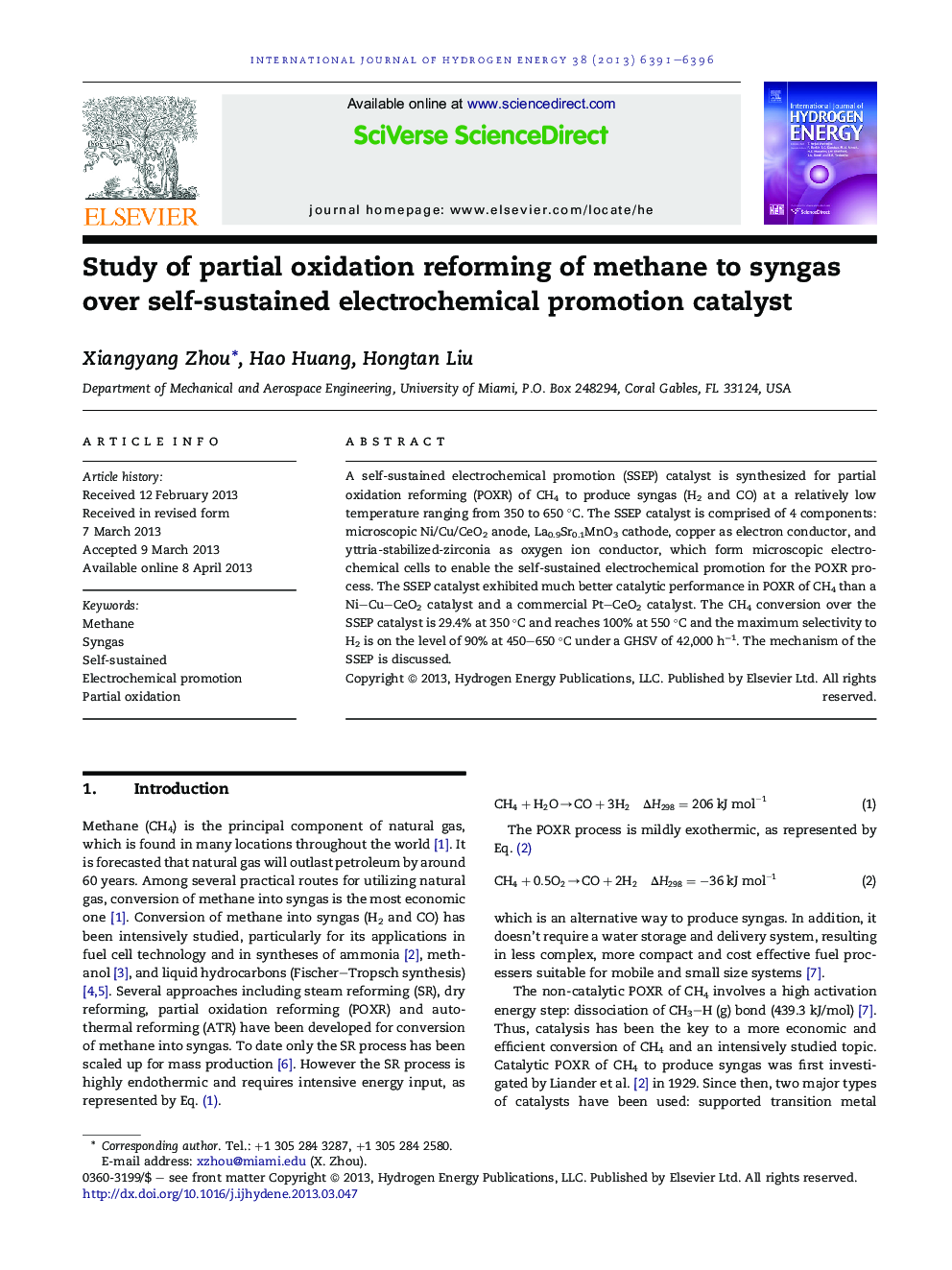| Article ID | Journal | Published Year | Pages | File Type |
|---|---|---|---|---|
| 1273753 | International Journal of Hydrogen Energy | 2013 | 6 Pages |
•We synthesized SSEP catalysts containing 4 microscopic phases without noble metal.•High conversion and sensitivities for CH4 reforming were obtained at 350–650 °C.•We confirm that SSEP enables the high performance at the low temperature range.
A self-sustained electrochemical promotion (SSEP) catalyst is synthesized for partial oxidation reforming (POXR) of CH4 to produce syngas (H2 and CO) at a relatively low temperature ranging from 350 to 650 °C. The SSEP catalyst is comprised of 4 components: microscopic Ni/Cu/CeO2 anode, La0.9Sr0.1MnO3 cathode, copper as electron conductor, and yttria-stabilized-zirconia as oxygen ion conductor, which form microscopic electrochemical cells to enable the self-sustained electrochemical promotion for the POXR process. The SSEP catalyst exhibited much better catalytic performance in POXR of CH4 than a Ni–Cu–CeO2 catalyst and a commercial Pt–CeO2 catalyst. The CH4 conversion over the SSEP catalyst is 29.4% at 350 °C and reaches 100% at 550 °C and the maximum selectivity to H2 is on the level of 90% at 450–650 °C under a GHSV of 42,000 h−1. The mechanism of the SSEP is discussed.
